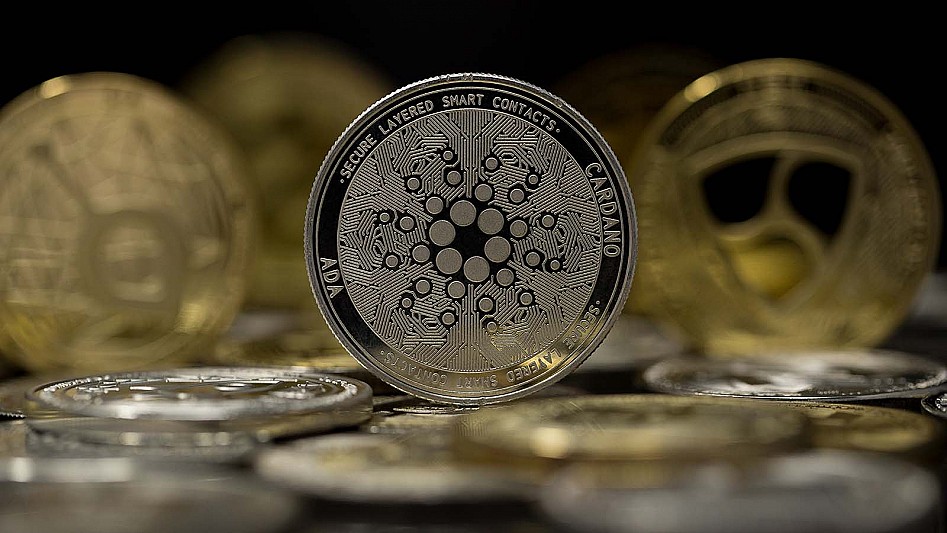Speculation Mounts as Cardano ETF Odds Rise, Network Activity Surges
17.05.2025 21:00 1 min. read Alexander Stefanov
The likelihood of a spot Cardano (ADA) exchange-traded fund (ETF) getting the green light by the end of 2025 is gaining momentum—at least in the eyes of the betting markets.
According to decentralized prediction platform Polymarket, traders now place a 55% probability on approval, a sharp climb from just 10% earlier this year.
The surge in optimism follows the successful launches of Bitcoin and Ethereum spot ETFs in the U.S., which have opened the door to broader regulatory acceptance. If ADA follows suit, it could attract a new wave of institutional capital—something Cardano supporters believe will fuel both adoption and price growth.
While analysts point to Cardano’s energy-efficient proof-of-stake system and active ecosystem development as compelling fundamentals, some remain cautious. Regulatory clarity remains fluid, and many warn that sentiment could shift quickly based on political or legal developments.
Meanwhile, on-chain activity is showing signs of life. Blockchain data from Cardanoscan reveals a steady increase in daily transactions, with numbers rising from around 30,000 at the start of May to nearly 50,000 by mid-month. Though far from historic highs, the consistent throughput signals growing network engagement beyond speculation.
As investors weigh the potential for an ADA ETF, real-world usage may play a bigger role than ever in shaping the asset’s future trajectory.
-
1
Pepe Price Prediction: One-Month Trend Line Resistance Breakout Could Push PEPE to $0.000015
04.07.2025 18:41 3 min. read -
2
Bonk Price Prediction: Binance.US Mention Triggers 9% Jump – Can BONK Reach $1?
07.07.2025 16:29 3 min. read -
3
Top 10 Trending Cryptocurrencies Today, According to CoinGecko
04.07.2025 15:31 3 min. read -
4
Second Largest Bank in Spain Rolls out in-app Bitcoin and Ethereum Trading
07.07.2025 15:30 2 min. read -
5
How Much Profit Would you Make if you Invested $3,000 in Shiba Inu One Year Ago?
09.07.2025 22:00 2 min. read
Crypto’s Top Narratives in Focus, According to AI
A fresh breakdown from CoinMarketCap’s AI-powered narrative tracker reveals the four most influential crypto trends currently shaping the market: BTCFi & DePIN, U.S. regulatory breakthroughs, AI agent economies, and real-world asset (RWA) tokenization.
Top Trending Cryptos Right Now, According to CoinMarketCap
CoinMarketCap’s evolving momentum algorithm—powered by social, price, and news signals—has flagged three standout cryptocurrencies driving narrative and capital flows this week: OKZOO, Tagger, and Tezos.
Top 7 Crypto Project Updates This Week
The crypto industry saw major advancements this past week across DeFi, NFT, Layer 2, and AI-powered platforms.
U.S. Ethereum ETFs See $402 Million Net Inflow Led by BlackRock’s ETHA
On July 18, Ethereum ETFs in the U.S. recorded a combined net inflow of $402.5 million, signaling strong institutional demand even as some funds saw outflows.
-
1
Pepe Price Prediction: One-Month Trend Line Resistance Breakout Could Push PEPE to $0.000015
04.07.2025 18:41 3 min. read -
2
Bonk Price Prediction: Binance.US Mention Triggers 9% Jump – Can BONK Reach $1?
07.07.2025 16:29 3 min. read -
3
Top 10 Trending Cryptocurrencies Today, According to CoinGecko
04.07.2025 15:31 3 min. read -
4
Second Largest Bank in Spain Rolls out in-app Bitcoin and Ethereum Trading
07.07.2025 15:30 2 min. read -
5
How Much Profit Would you Make if you Invested $3,000 in Shiba Inu One Year Ago?
09.07.2025 22:00 2 min. read


